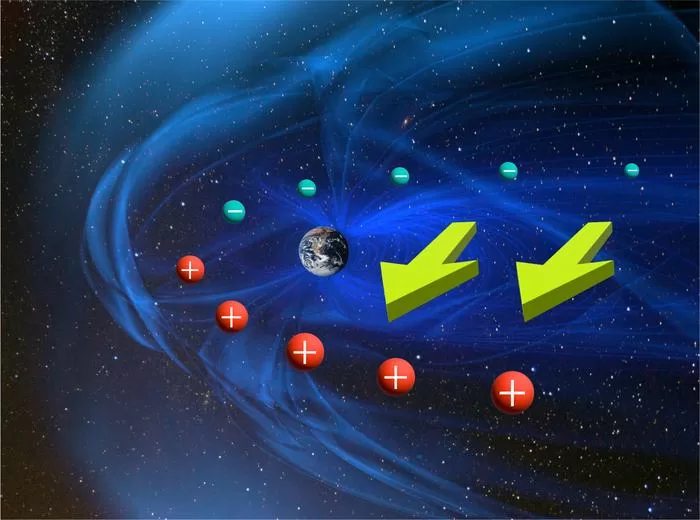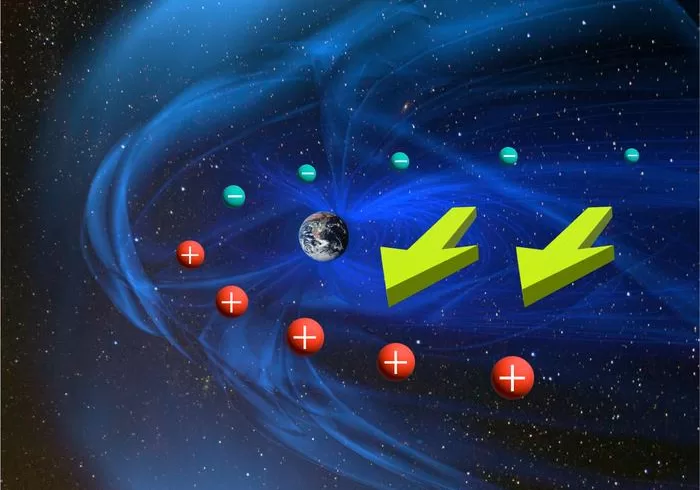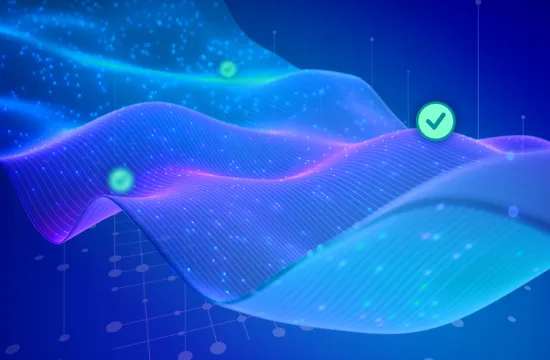
Kyoto, Japan — The region of space dominated by Earth’s magnetic field is the magnetosphere. Observations have shown that, within this region, an electric force acts from the morning side to the evening side as seen from Earth.
This large-scale electric field is known to be a key driver of various disturbances such as geomagnetic storms.
Since electric forces act from positive to negative charges, it has been suggested by some that the magnetosphere is positively charged on the morning side and negatively charged on the evening side. Yet recent satellite observations have revealed that this polarity is actually the opposite.
This discovery prompted a team of researchers from the universities of Kyoto, Nagoya, and Kyushu to reexamine the underlying mechanisms of the magnetosphere.
Using large-scale magnetohydrodynamic — or MHD — simulations, the research team reproduced the near-Earth space environment, assuming a steady high-speed plasma flow from the sun, otherwise known as the solar wind. Their simulation results confirmed the recent observations that negative charging occurs on the morning side and positive charging on the other—but not everywhere.
In the polar regions, the polarity remains consistent with traditional understanding. In contrast, in the equatorial region, it is reversed over a broad area.
“In conventional theory, the charge polarity in the equatorial plane and above the polar regions should be the same. Why, then, do we see opposite polarities between these regions? This can actually be explained by the motion of plasma,” says corresponding author Yusuke Ebihara of Kyoto University.
As the magnetic energy originating from the sun enters the magnetosphere, it circulates clockwise on the dusk side and flows toward the polar regions.
On the other hand, Earth’s magnetic field points from the Southern Hemisphere to the Northern Hemisphere, meaning that it is directed upward near the equatorial plane and downward above the polar regions. Consequently, the relative orientation between plasma motion and magnetic field is reversed between these regions.
“The electric force and charge distribution are both results, not causes, of plasma motion,” says Ebihara.
Convection, which describes the plasma flow in the magnetosphere, is a major driver of various space environment phenomena. Recent studies have also highlighted its indirect role in modulating the radiation belts, regions populated by high-energy particles moving at nearly the speed of light.
These findings contribute to a better understanding of the fundamental nature of large-scale plasma flows in space. Since these phenomena play a crucial role in space environment variability, this study also offers insights into planetary environments around magnetized planets such as Jupiter and Saturn.







